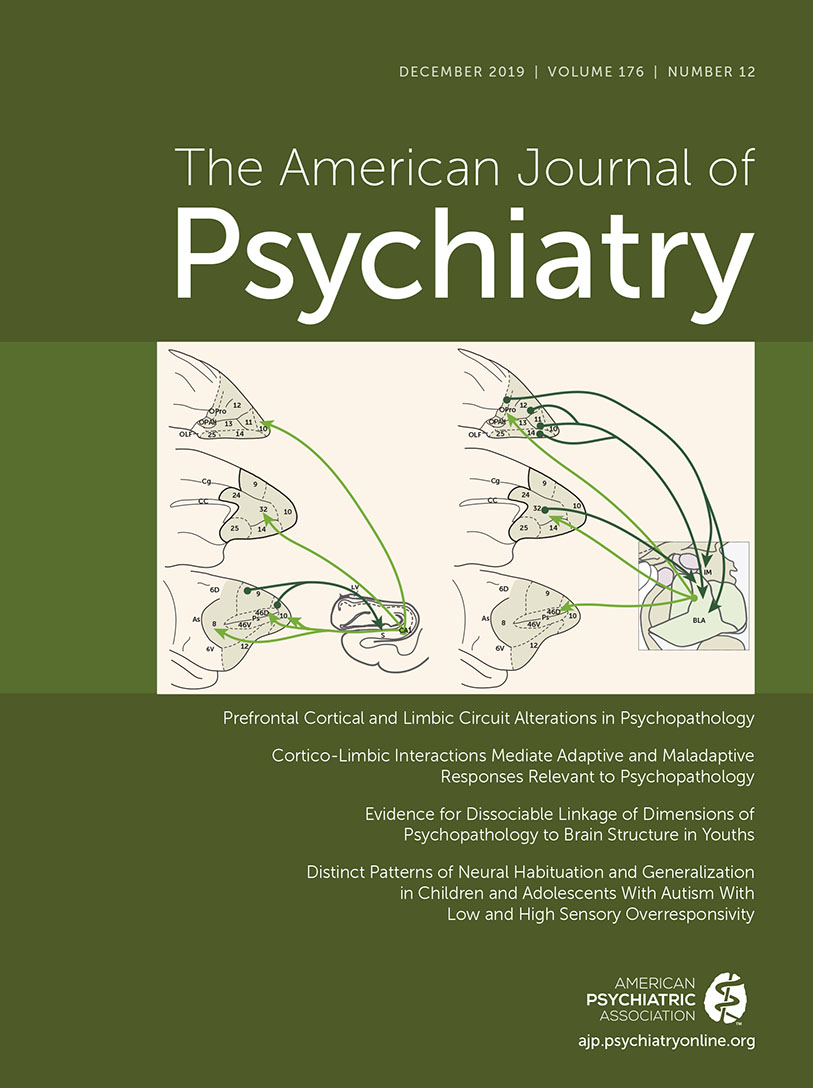Evidence for Dissociable Linkage of Dimensions of Psychopathology to Brain Structure in Youths
Abstract
Objective:
High comorbidity among psychiatric disorders suggests that they may share underlying neurobiological deficits. Abnormalities in cortical thickness and volume have been demonstrated in clinical samples of adults, but less is known when these structural differences emerge in youths. The purpose of this study was to examine the association between dimensions of psychopathology and brain structure.
Methods:
The authors studied 1,394 youths who underwent brain imaging as part of the Philadelphia Neurodevelopmental Cohort. Dimensions of psychopathology were constructed using a bifactor model of symptoms. Cortical thickness and volume were quantified using high-resolution 3-T MRI. Structural covariance networks were derived using nonnegative matrix factorization and analyzed using generalized additive models with penalized splines to capture both linear and nonlinear age-related effects.
Results:
Fear symptoms were associated with reduced cortical thickness in most networks, and overall psychopathology was associated with globally reduced gray matter volume across all networks. Structural covariance networks predicted psychopathology symptoms above and beyond demographic characteristics and cognitive performance.
Conclusions:
The results suggest a dissociable relationship whereby fear is most strongly linked to reduced cortical thickness and overall psychopathology is most strongly linked to global reductions in gray matter volume. Such results have implications for understanding how abnormalities of brain development may be associated with divergent dimensions of psychopathology.



